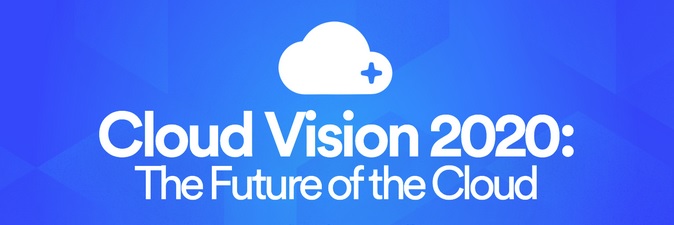
Most companies are adopting a cloud strategy. In ServiceNow's Cloud Tipping Point Survey, half of all enterprises reported they are now "cloud-first," meaning that the next workload they deploy will go to the cloud instead of their data center.
It took 20 years from the time the term "cloud computing" was coined to reach this milestone. When will we be at a point where virtually all enterprise workloads are run in the cloud and how will that change things for IT?
To find out, we commissioned our own survey, Cloud Vision 2020: The Future of the Cloud. We started with a group of core influencers – people whose job it is to follow cloud computing. This group of 88 "cloud cognoscenti" included industry analysts, media, consultants and cloud vendors. We then followed that up with another survey fielded at the 2017 AWS re:Invent conference in Las Vegas where we received 195 additional responses from the people tasked with workload deployments in the real world.

The results were fascinating. I'll share three fundamental lessons we learned in the survey as well as some advice for going forward.
Lesson 1: The Reasons Why Enterprises Embrace Cloud Computing Are Changing
Why do enterprises use cloud today? The drivers of cloud computing today will sound very familiar: digital transformation, IT agility and the rise of the DevOps culture.
Those make perfect sense. Digital transformation aims to put the customer at the center of a company's automation strategy, and cloud is an excellent way to accomplish that. IT agility is much easier to achieve when someone else is responsible for your infrastructure, and you can focus on applications. The DevOps culture relies on cloud computing to achieve the speed and efficiency it was designed to deliver.
But by 2020 we expect those drivers to shift, revealing a new top-driver: artificial intelligence (AI)/machine learning. That wasn't what I expected, but it makes sense.
First, AI provides the ability to extract insight from the massive "data lakes" that enterprises are collecting about their application performance and behavior. Similarly, public cloud provides the scale to provide the massive compute resources AI needs.
But more than storage and compute, the public cloud is quickly becoming a hub for AI services that developers can integrate to build sophisticated AI applications. AWS, for example, has been busy adding Machine Learning-as-a-Service capabilities.
Lesson 2: It's Going to be a Hybrid World for the Foreseeable Future
ServiceNow's survey showed that half of all enterprises are now cloud-first, but that means half are not. And, even if an enterprise is cloud-first, it will still have many legacy workloads in an on-premises data center.
We asked survey respondents to forecast when they felt nearly all (95 percent) workloads would finally be in the cloud. Predictably, a few enthusiastic cloud supporters predicted this would happen within one year (6 percent) or two years (9 percent). However, nearly two-thirds (64 percent) felt that we won't reach the 95 percent threshold for 7 years or more. In fact, one in eight respondents say we'll never reach that important threshold.
Clearly, we'll be living in a world with both on-premises and cloud workloads for the foreseeable future.
Lesson 3: AWS Dominates, But The Marketshare Race Isn't Over
Amazon's AWS has been an amazing success. Analysts report that AWS enjoys 47 percent of the public cloud market today, with Microsoft Azure at 10 percent and Google Cloud Platform at 4 percent. Other companies, such as IBM Softlayer, make up the remainder with 2 percent or less each. That's a commanding lead, but will it hold going forward?
Industry influencers expect both Microsoft and Google to gain ground against AWS going forward. They forecast that by 2020 AWS will grow slightly to a 52 percent market share, with Microsoft growing to 21 percent and Google growing to 18 percent. Those are impressive gains in a short period of time, and point to a robustly competitive market for public cloud.
Reas Part 2: How to Prepare for the Future of the Cloud


